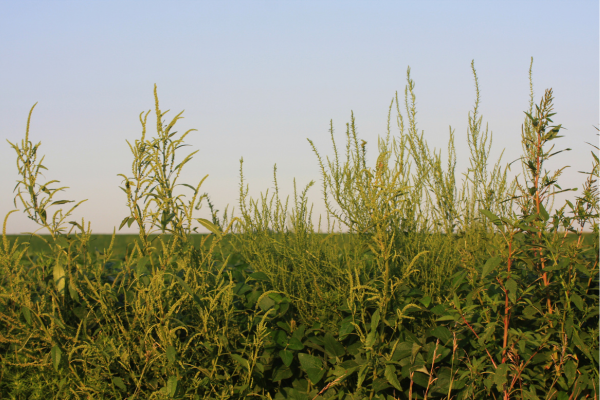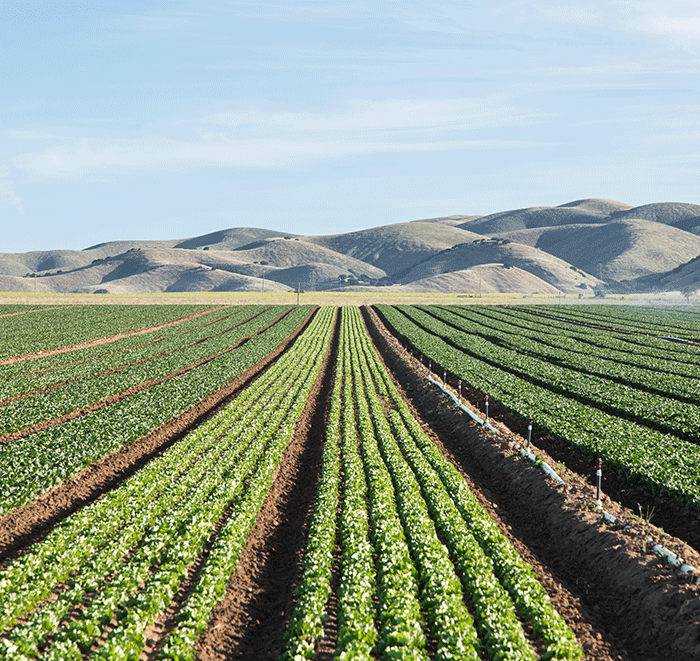
Weed Escapes
What is the answer to weed control?
There is not one thing that can make your weed control better or worse. There are many things to consider. This is part of the reason why the industry continues to provide options that are “add-on” modes of action to the wide-based platform of Roundup Ready crops. Combinations with Dicamba, 2,4-D, and Glufosinate (Liberty) are all current herbicide traited options available for use in post-emergence weed control within Roundup Ready Crops. As the industry continues to develop additional herbicide tolerant combinations for soybeans, it is inevitable that scrutiny of these herbicide tools will also increase. For example, stories about glyphosate (the active ingredient in Roundup, Traxion, Buccaneer, Touchdown, and a host of other compounds) resistant weeds and concern about the use of Roundup Ready crops have circulated for years since the introduction occurred into row-crop use back in the mid-late 1990’s. Most of these stories actually create fear of using beneficial technology and provide use recommendations not based not on scientific data but largely on emotions and assumptions. This can create consumer concern about using technology that has proven to provide many benefits, including facilitation of conservation tillage systems, excellent weed control, and excellent crop safety. But, as the years of broad spread application have continued to develop, the incidence of more weeds (waterhemp/marestail mainly) escaping a treatment has also increased.
Are all marestail, palmer amaranth, and waterhemp populations resistant?
Doubtful. Roundup herbicide was first sold in 1974, providing growers with a new and effective tool for non-selective, broad-spectrum weed control. Roundup Ready crops were introduced beginning in 1996, providing growers with additional tools to obtain excellent weed control and crop safety, along with greatly improved ease, flexibility, and potential cost savings. Both of these novel technology introductions have revolutionized weed control practices in crops since then. Along with the popularity came challenges, and weed resistance has developed since then. I guess this should not be too much of a surprise. However, it is hard to argue that Roundup agricultural herbicides and Roundup Ready crops are excellent, economical solutions to weed control while offering a relatively low risk of resistance development. Remember the pre-1996 alternatives? —Cultivating walking beans in the summer heat, etc. More of a nightmare for many growers, as we continually seek better options for soybean weed control.
Over the past 10 years or so, weed species such as pigweeds (waterhemp, palmer amaranth, redroot pigweed), and marestail, have become routine candidates for weed control escapes from a Roundup treatment—primarily in soybeans. This year is no different as we have experienced a number of fields treated with a glyphosate/glufosinate based treatment that was applied 2 to 3 weeks ago, now have marestail and pigweed escapes from the original treatment.
WHY?
- Why does the treatment kill one waterhemp plant fine and not kill another waterhemp plant of the same size three feet away?
- Why are there seemingly more escapes this year than in past years?
- Why do certain fields that had tillage pass earlier have more weeds/more escapes now?
Glyphosate/Glufosinate have no soil residual, and is tightly bound to soil organic matter and dust. These two facts play important roles in why there continues to be weed escapes after application—even with high use rates. These facts also aid in the potential development of resistance.
I have seen most escapes in the areas that are directly behind where the sprayer traveled in the field. I have also seen many escapes along roads where excessive dust from the adjacent road has covered the leaves. Dust/dirt on the weeds’ leaves will limit/tie up the glyphosate from being absorbed/translocated in the plant. Areas that incurred tillage this year are seeing increased weed pressure. This is likely due to the weed seed dormancy being broken via the tillage practice in the soil. I won’t argue the justification for the tillage, I just notice that weed pressure is generally greater in areas that have had a tillage pass since that last cropping season.
I do not believe that every waterhemp, marestail, or any other weed escape makes the weed automatically resistant to glyphosate. The inconsistency of the weed control is likely a matter of really all of the following:
- No pre-emergence herbicide use with a dual mode of action
- Application timing with no increased rate change for larger weeds
- The non-use of an additional post-emergence herbicide/mode of action and residual for control of these weeds in the treatment
- Hot, dry, dusty, dirty conditions at application time—actively growing non “dirty” weeds are easier to kill.
The long and short of this discussion really comes down to this; a balanced weed management strategy combined with the “right” genetics is always key to your success. Not many growers I visit with fault their herbicide programs in October if the soybeans don’t yield. Yes, you might have/will have weed escapes, but I doubt whether they will have any yield reduction capabilities if you are just seeing them now. You must combine proven genetics with the herbicide trait options, regardless of the trait options you select. I also encourage you to consider the continued use of multi-mode pre-emergence applications, along with multi-mode post-emergence applications if you are having problems controlling palmer amaranth or waterhemp late into the growing season (August).
Dr. John McNamara // Wilbur-Ellis Agronomist



